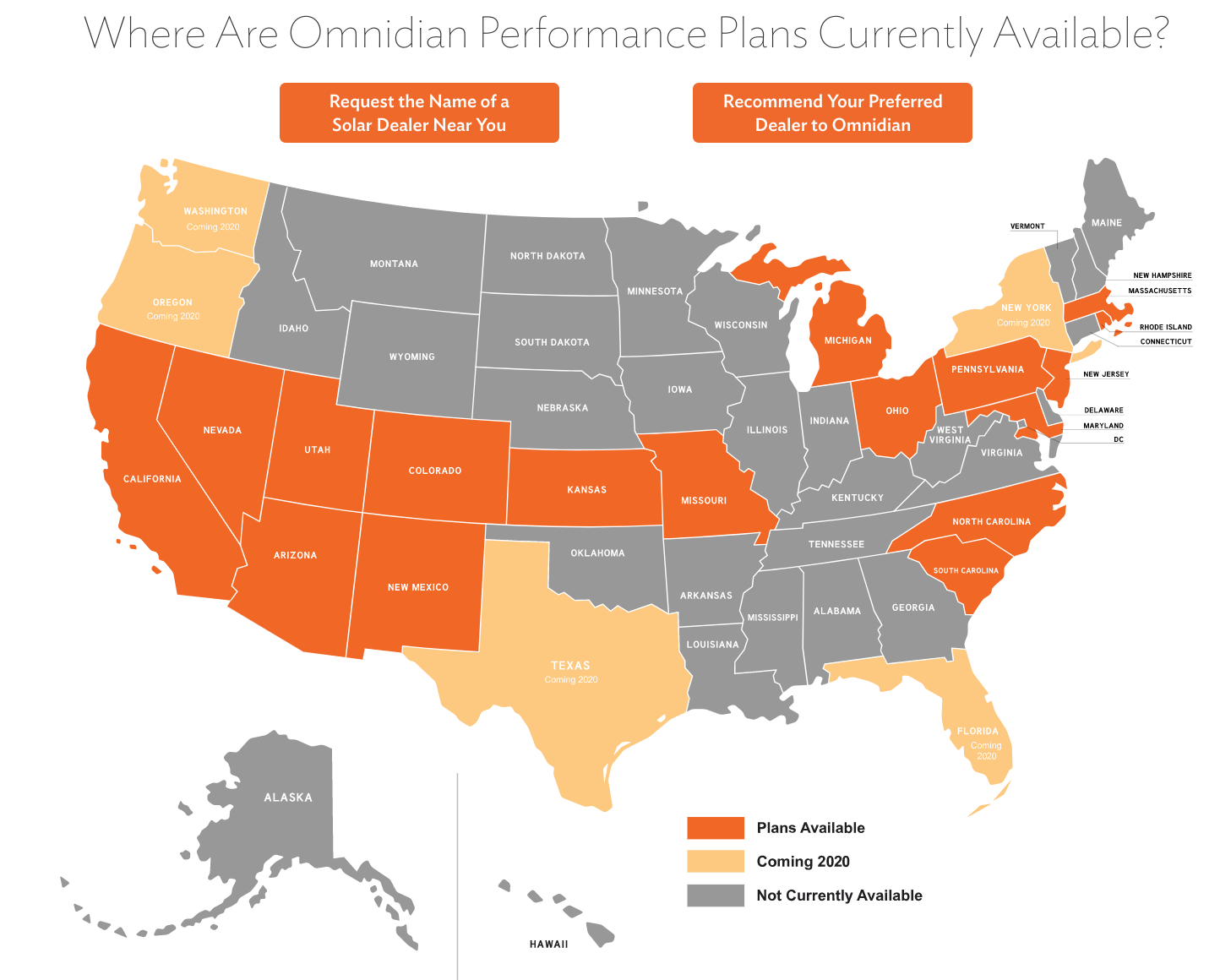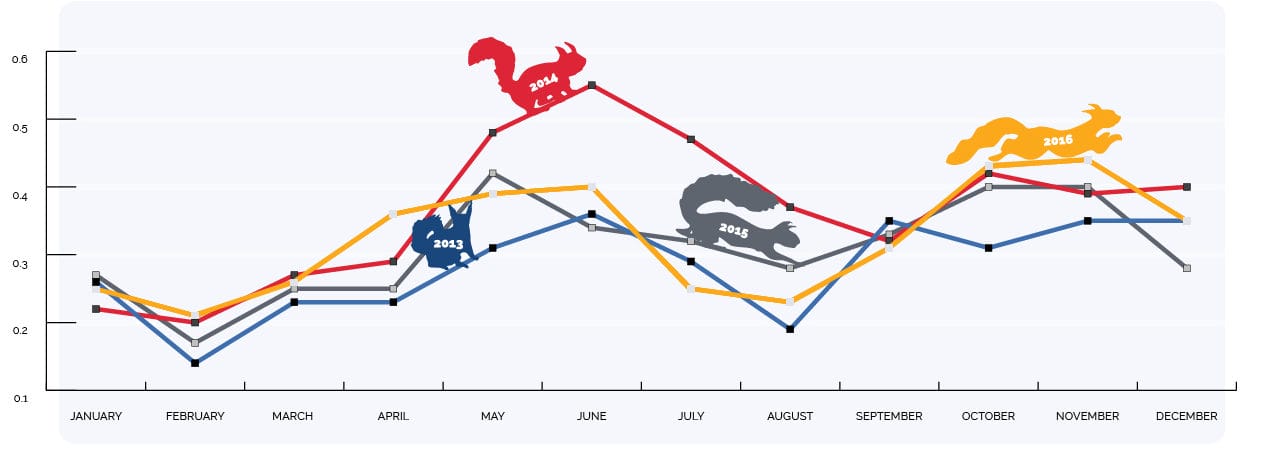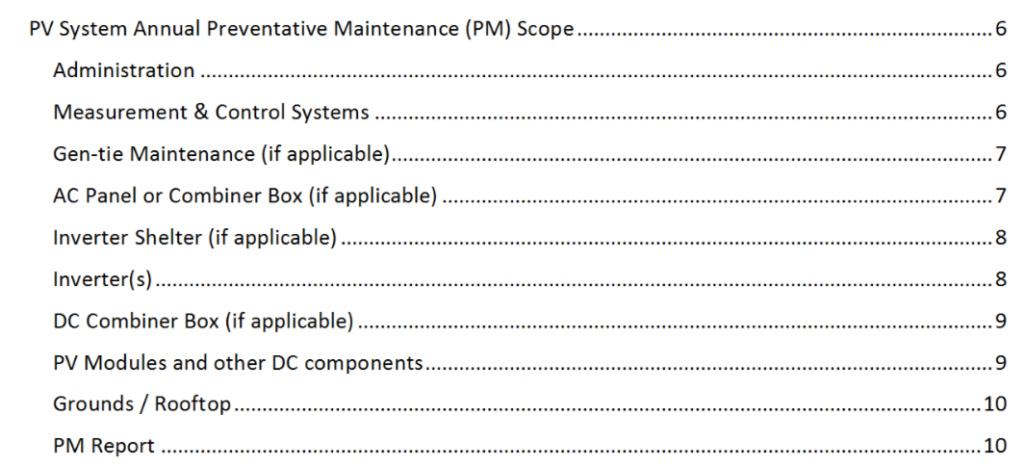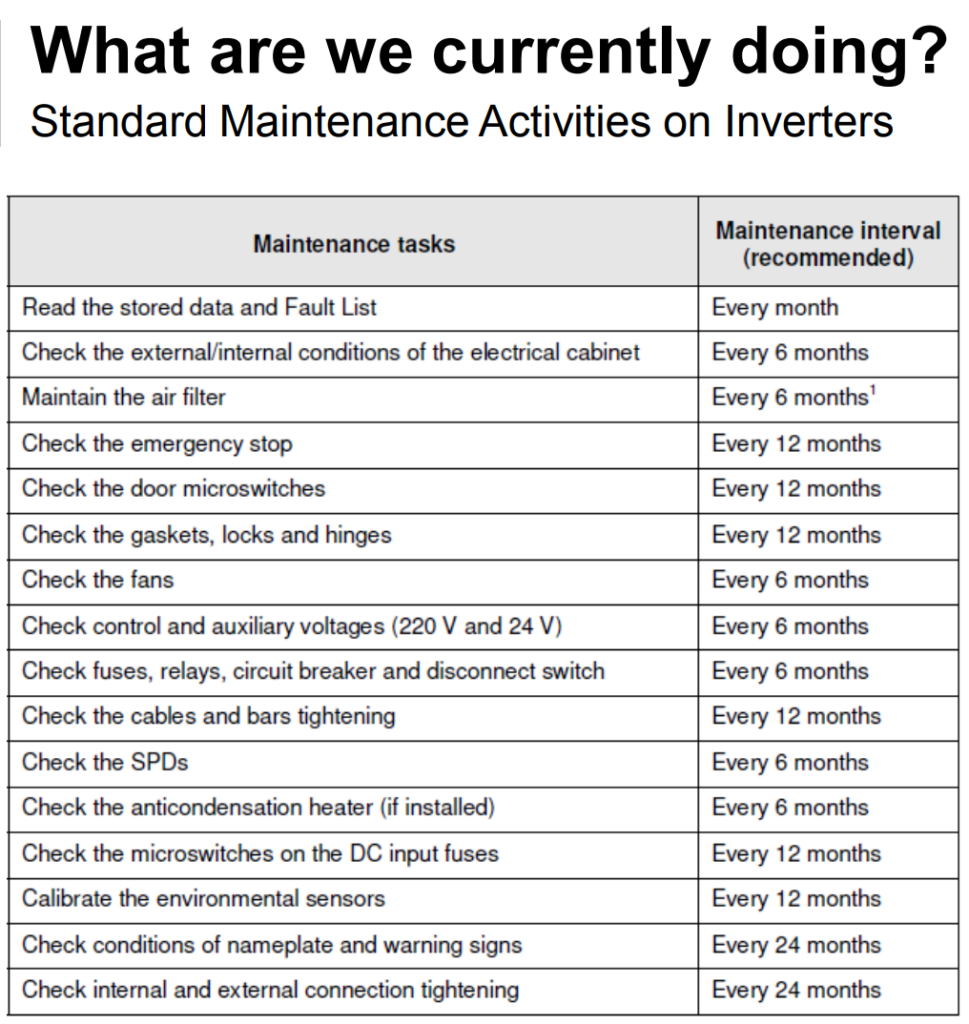Solar power plants are projected to last at least twenty years. During this time, they generate electricity that pays back your investment. And yes, a cloudy day or two is okay– in fact it’s accounted for in these solar power service plans– but what about making sure the system runs in general?
First – two pieces of solar plant operations and maintenance news:
- Omnidian, a nationwide provider of residential and commercial solar system performance plans and cash-back energy guarantees, has acquired the commercial solar operations and maintenance (O&M) business from its partner PV Pros.
- 3megawatt’s has launched a partnership network that helps solar portfolio owners find qualified asset management service providers specifically trained in their software platform, known as BluePoint.
Specifically, I’m looking at Omnidian because Commercial Solar Guy is researching their competitive (local company = Beacon Solar) offering of solar power service plans for my own residential customers. Ominidian offer a residential and commercial “95% performance guarantee.” Price for the residential service is ~$13/month, with a one time start up fee of $344.
Residential customers get a “100% covered system maintenance for all system parts and components— including wiring and inverters.” The commercial program – Omnidian Guarantee Plan – states, “Your systems performs or Omnidian pays you for the shortfall, even if the shortfall is due to poor weather.” That’s impressive, considering…
How customers in Massachusetts take advantage of solar power service plans
Local Beacon Solar of Taunton, Massachusetts, offers a similar solar power service plan. I am going to offer this plan to my own residential customers when I use Beacon’s installation crews to build my residential projects. The company charges $10/month.
Beacon remotely monitors your system via its built in communication hardware. Software watches various aspects of the system 24/7/365. Beacon Solar’s Michael Goulart, Sales & Service Manager, told me this morning that each day the first thing he does is open an app, and the systems with issues are at the top of the screen.
Goulart said that most systems you won’t visit within the year. However, he also referenced what he called an extreme example in Winchester, Massachusetts:
Customer is in Europe. I get a notifications of multiple arc faults. The software suggests that a module keeps attempting to reconnect, and each times is arc faulting. I get in touch with the customer and I asked if has had a neighbor that could give the house a look. Turns out, there was a squirrel nest underneath, and the squirrels had chewed through the wires and caused a fire that burnt through a module.
Electric utilities put squirrels among the top causes of power outages per year : “in 2016 alone, utilities reported 3,456 outages caused by the ubiquitous rodents that cut off power to more than 193,873 customers.”
Beacon Solar’s service is structured considering that most hardware is still under warranty. Beacon will determine the hardware issue remotely if possible, they’ll submit the documents needed to the manufacturer, receive the new hardware, install it and then return the old gear to the manufacturer. If the manufacturer does not cover labor or shipping, then the customer pays for it.
To Commercial Solar Guy‘s knowledge, only a few manufacturers cover hardware replacement labor – SMA for inverters, and Solaria/REC Group/SunPower for modules.
Some rough costs f0r the labor aspect of hardware replacement:
- $350 to replace an inverter
- $150 to repair a communication issue with an optimizer or inverter
- $150-400 to replace a bad optimizer or microinverter. This range is based on where the module with the bad optimizer is. If it’s on the edge on the layout, and only one module need be lifted to fix the issue, it’s cheaper. If it’s in the middle of the solar panels and multiple modules have to be moved, it will take more time
According to Goulart, the most common onsite work needed is: “A lot of optimizers, a few microinverters, some inverters, and not too many solar panels – had a few, but not to0 many.”
Beacon Solar says it’s important to pay attention to both the solar electricity generation of the system as a whole, but also to the individual pieces of hardware. Goulart said,
Got a new customer three weeks ago, his old company went out of business. First thing we did was get him on one of our solar power service plans, and we saw an optimizer down. Since June. He had no clue, because most of these systems don’t have panel monitoring and notifications, just production monitoring. And the reality is, one panel just isn’t enough to notice. What are you losing, maybe $10/month?
World leading single axis tracker manufacturer NexTracker monitors over 6,000 individual data points on their hardware.
When something works well, you forget about it
In my professional experience, business and homeowners first love their new solar. This is evident in them checking out the production app on their smartphone and in the browser daily. Then we all see that first electricity bill. And it’s great!
We check those electricity bills a few more times, feeling buzzed with their choice. But after a quick while, the system becomes an appliance – whose job it is to run, not to be cool. And just like that, the love affair between system owner and the sleek silicon/aluminum/copper is over.
Two customers of mine have gone through *weeks* where their systems were partially or fully down, and no one was watching. If your HVAC or lighting goes down, you know because your body has hardware to tell you. If your vehicles or computers don’t turn on, it’s real obvious.
Here are two of my customer examples:
- A new solar system was installed within the last 12 months. Customer has a contract with the construction company to monitor the solar system. 11 out of 12 inverters running perfectly, one inverter went down. The unit went down in the middle of the winter – thus it was barely perceptible among the noise. Unit did not have individual hardware failure notifications. Six weeks passed until it was noticed.
- Eight-year old solar system that has covered its initial investment long ago. The system has a monitoring and service agreement with the original construction firm. They go out of business. Customer browsing email notifications from the monitoring company (that come way too often: “whenever a cloud passes” he says) sees that the system is 100% down – and has been for three weeks.
Dammit. That hurt me.
Another consideration: preventative maintenance
Lawrence Shaw, owner of High Powered Solar of Arizona (who enjoys the topic of rooftop solar fires), focuses on preventative maintenance (PM). This was shaped by his prior experiences as a nuclear electrician with the US Navy and field service engineer for utility-scale solar inverters – where’s it’s your job to find problems before they cause an issue.
Shaw seeks to create an industry standard for residential preventative maintenance that includes annual visual inspections, and infrared imaging specifically to look for system hotspots.
He noted that California electric utility Pacific Gas & Electrics’ upkeep standards for solar power leave much open to interpretation:
Those practices, methods, and equipment, as changed from time to time, that are commonly used in prudent electrical engineering and operations to design and operate electric equipment lawfully and with safety, dependability, efficiency, and economy
Shaw’s provides customer with a Residential PV Solar System O&M Scope. It’s table of contents (image below left) shows the annual service work provided. Shaw leaves nothing to the imagination. The below right image is what global power company Enel’s David Grandi presented as the work they do only on inverters at utility scale solar projects.




